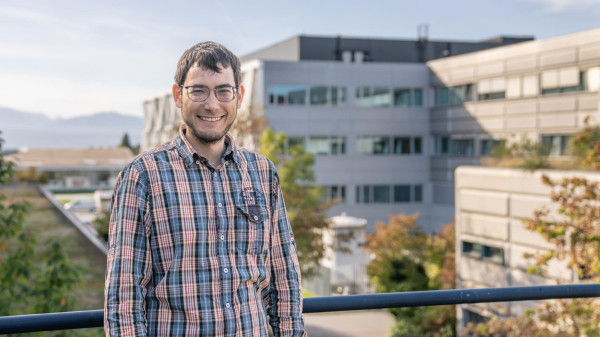The rigorous mathematician at the service of material science
Written by Michael David Mitchell - STI/EPFL (click here for the original article - CC BY-SA 4.0)
What can go wrong in a numerical model? As the saying goes, sometimes the math just doesn’t add up. This is where Michael Herbst comes in. With a background originally in chemistry, bolstered by computational methodology, his goal is to “try to build a bridge between mathematics and materials science using numerical methods, in particular simulations. I look at what things can go wrong and how we can make the models more robust and faster.”
Computer simulations play a pivotal role in materials science, shaping the way researchers understand, design, and manipulate materials at various scales. The basic idea is to have a very good notion of how a material will behave before engaging in the expensive and resource heavy lab experiments. Numerical models can save time and money when looking for the best material for a specific purpose, say thermoconductivity or light absorption.
Herbst’s goal is to apply the most state of the art mathematical methods to these useful simulations in order to ultimately streamline the research-to-application pipeline. He has proven that by focusing on the mathematics, he can significantly improve the accuracy of current models that materials scientists are using every day. “You could say that we’re taking ideas and inspirations from the rigorous setting of mathematics and then expanding it towards the practical setting where full rigor is no longer given. But from what we’ve learned on the mathematics side, we can get some advantage effectively over the methods that are out there,” says Herbst.

Michael Herbst
His joint position between the two schools exemplifies his mission—to apply the rigor of mathematics to the applications of the engineering world. This seeming duality is at the heart of his multidisciplinary approach. He reveals, "I think for me, my CV is a bit unusual because I actually studied chemistry at Cambridge, including labwork and so on." This chemistry background gave him a distinct edge, allowing him to specialize "towards the end of my master's degree on theoretical and computational chemistry." His PhD journey further intensified this focus, stating, "during my PhD at Heidelberg University, the direction towards the mathematical side and the simulation side intensified. I was officially hosted in the chemistry department, but I was developing numerical methods for modeling molecules."
Herbst came to EPFL from RWTH Aachen University via a joint position at three Paris institutions: Sorbonne University, Inria and Ecole des Ponts. By the time he was a postdoctoral researcher at these institutions, his feet were firmly planted in the world of materials science. His background in simulations and passion for the precision of mathematics means that he’s at ease taking out a pen and paper to sketch a possible mathematical solution to a seemingly intractable problem, but also keen to dig into the software running the simulations to see if he can improve them by adding a layer of confidence that comes from a deeper mathematical approach.
At EPFL, Herbst aims to continue his quest for improving the computational models that engineers use in materials science. He’s identified several errors that crop up due to the complexity and sheer number of methods employed. “I want to take some of the guess work out of the simulations,” as he puts it. Michael further emphasizes, "the fundamental physics is actually quite important, as it turns out." He’s currently focusing on a branch of research called Ab Initio Electronic Structure Theory. Derived from the Latin term "Ab Initio", meaning "from the beginning" or, here in the context of logics and mathematics, “from first principles,” this theory doesn't rely on empirical data or approximations. Instead, it seeks to predict properties of materials by directly applying the fundamental principles of quantum mechanics.
Bridging quantum physics and materials science is the very cutting edge of work being done in the field today. Herbst brings a new, multidisciplinary approach to his two schools, spanning two complex fields in one exacting methodology. When asked how much these models can actually be improved, Herbst smiles and answers, “I think there's a lot that can be done. I'm pretty sure that I will be busy for at least the next ten years.”
Low-volume newsletters, targeted to the scientific and industrial communities.
Subscribe to our newsletter